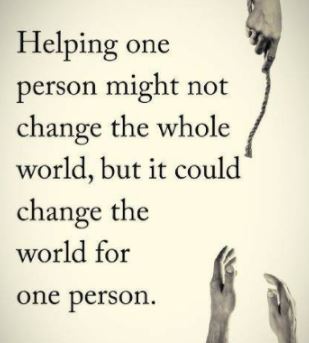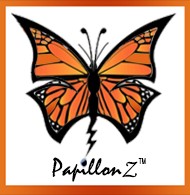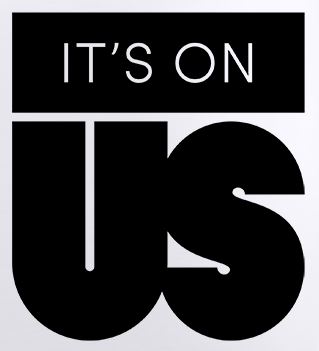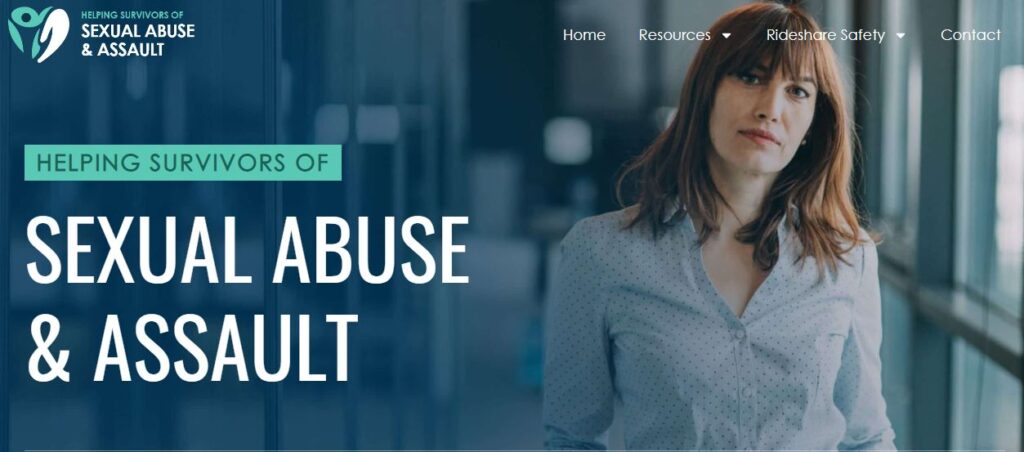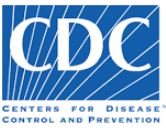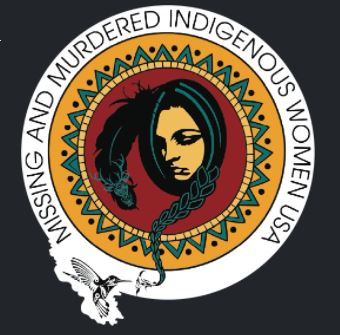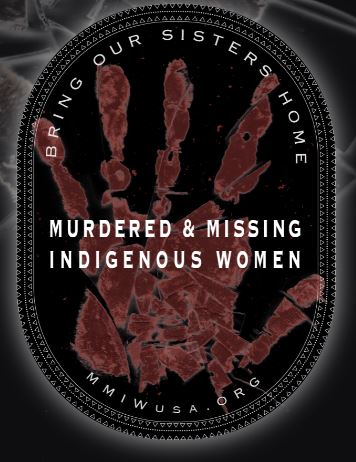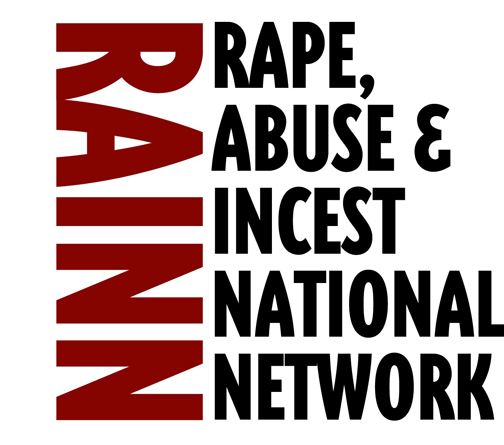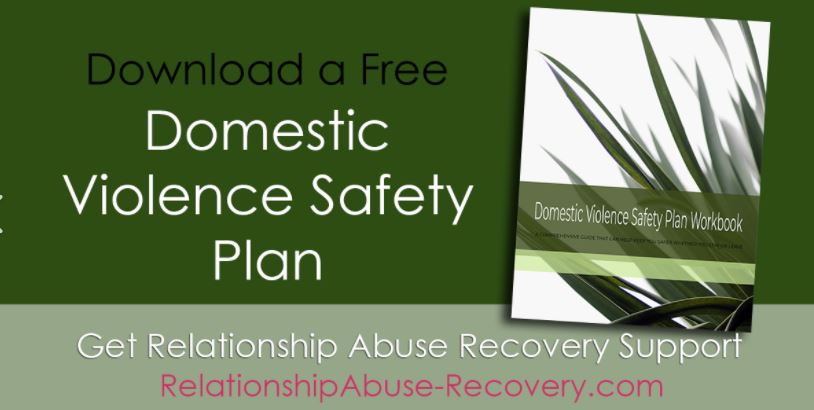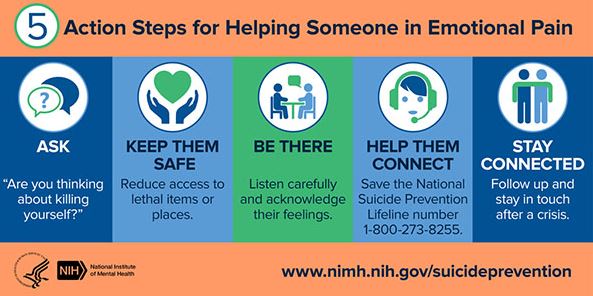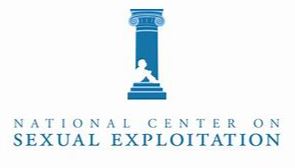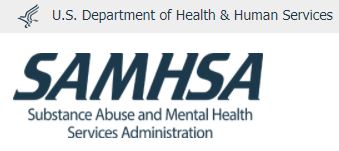How to Help Someone You Care About
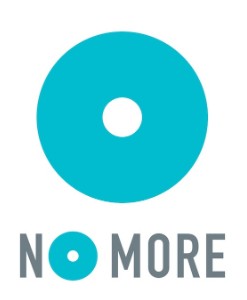
“With more than 1,400 allied organizations and over 40 state, local, and international chapters, NO MORE sparks grassroots activism, encouraging everyone—women and men, youth and adults, from all walks of life—to be part of the solution.” Click Here to learn more about NO MORE, and here How to Help Survivors
The NO MORE Silence, Speak Your Truth platform provides a safe and supportive space for people impacted by domestic violence to share their experiences, learn from other survivors, and connect to resources.
“Your story is personal and unique, but sharing it can be a healing experience for you and others.
Remember, healing is not linear and is different for everyone. It is important to stay patient with ourselves when setbacks occur in our process and forgive yourself for everything that may go wrong along the way.”
“NO MORE is a groundbreaking, global initiative comprised of the largest coalition of nonprofits, corporations, government agencies, media, schools, and individuals addressing domestic and sexual violence. We are committed to engaging, reaching, and working with people from diverse communities.” Click Here to GET HELP – Directory of domestic & sexual violence helplines & services ~ 200+ LOCATIONS AROUND THE WORLD!
Bright Sky can help you:
- Understand what domestic violence can look like
- Spot the warning signs of domestic violence
- Evaluate the safety of a relationship
- Locate the nearest support services across the United States
- Learn how to help a friend, loved one, or colleague that may be affected

Click the Links below for more information on Peaceoverviolence.org
- Types of Abuse
- Am I in an Abusive Relationship?
- The Cycle of Violence, Power & Control
- Safety Planning
- Myths & Realities
- Guide for Friends & Families
Understanding Child Sexual Abuse
What is Child Sexual Abuse?
How Common is Child Sexual Abuse?
Where Can Child Sexual Abuse Happen?
Signs of Child Sexual Abuse
Preventing Child Sexual Abuse
Long Term Consequences of Child Sexual Abuse
What To Do if You or Someone You Know Has Experienced Child Sexual Abuse
Statute of Limitations for Child Sexual Abuse Survivors
It’s On Us
1156 15th St NW, Suite 1000 | Washington, DC 20005 | contact@itsonus.org | 202.908.5226
OUR MISSION
Educational Tools
“The goal is for these resources to be easy to use, free, and easily adaptable to different campus communities. It’s On Us has held individual interviews and focus groups with students and staff to collect information on the gaps that exist in sexual violence prevention educational materials around the country today. We have developed peer-to-peer resources that address the existing needs students identified. Each educational tool was developed based on direct feedback and needs addressed by students and drawn from the most up-to-date research and best-practices, which are cited within each document.
“Choose a topic from the list below for resources that might help you with your campus organizing or programming. “
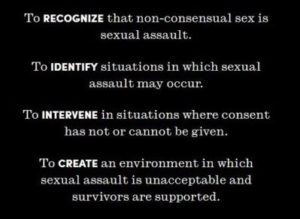
A Voice for the Innocent
A Voice For The Innocent is a safe, anonymous online community of support for victims of rape and sex abuse.
Join A Voice For The Innocent to share your support, or to share your story.
About
Blog Articles
Read Stories
Tell Your Story
Information & Support for Survivors
How to Report Sexual Assault & Abuse
Child Sexual Abuse (Church, Schools, Foster Care, etc.)
Grooming: Know the Warning Signs (Children, Teens, Adults)
How to Help Someone You Care About
#MeToo
TELLING OUR TRUTHS | You Can Heal From Abuse | NIKITA MITCHELL
“I am so glad you found this page. If you are here, it means you want more information for yourself or someone else who wishes to heal from sexual abuse or sexual violence. I want you to know that no matter what happened to you, healing is possible! It might not seem like it right now, but it is!
“There is no right way to heal, and your healing journey might look different from other people you know.
“There is no set time to heal, and it is never too early or late to start. Take one day at a time and be kind to yourself; you are doing the best you can.”
“Remember you are not responsible for taking care of or protecting the person who harmed you.
“As you can see, there are so many ways to heal! All of these options will allow you to heal your mind, body, and spirit.
“You can do as many or a few of these things as you like. Some of these things you may do already if so keep doing them!
“The best part is many of these things cost no money, don’t require a lot of equipment, can be done at home, school, in your community, with friends or family, and without parental permission.
“Being abused or experiencing sexual violence does not define your entire life. It does not mean you cannot be the person you want to be. I want you to know so many survivors are healing, thriving, and living the lives they want to live!
“You can too, don’t give up hope!”
~ Nikita Mitchell
https://metoomvmt.org/explore-healing/telling-our-truths/you-can-heal-from-abuse/
From Nikita Mitchell:
“There is no right way to heal, and your healing journey might look different from other people you know.
“There is no set time to heal, and it is never too early or late to start. Take one day at a time and be kind to yourself; you are doing the best you can.
“Here are all the ways you can heal from abuse:
- Talk to a counselor or a therapist
- Join a support group for survivors
- Tell your story to people you trust and will support you
- Make sure you have regular medical check-ups
- Take walks, dance, run, yoga, or another exercise you enjoy
- Meditate or do some deep breathing to help deal with your body’s response to fear, stress, and anxiety
- Drink plenty of water, eat well and get plenty of sleep
- Listen to music you love
- Draw, paint, color, take pictures or other craft projects
Know what happened is not your fault.
- Journal, write poems, music, or a narrative about your experience
- Read stories, poems, autobiographies or graphic novels
- Engage in any religious or spiritual practices that are meaningful and helpful to you
- Go to the park
- Swim, water play or spend time near water
- Spend time in nature
- Nurture a pet, house plants, or a garden (animal shelters and community gardens always need volunteers)
- Play sports, join clubs and other activities
- Sing by yourself, in a group, with a chorus or choir
- Play an instrument, join a band or orchestra
Know what happened is not your fault.
HUMAN & SEX TRAFFICKING
Sex trafficking is a type of human trafficking and is a form of modern-day slavery. It is a serious public health problem that negatively affects the well-being of individuals, families, and communities. Human trafficking occurs when a trafficker exploits an individual with force, fraud, or coercion to make them perform commercial sex or work.
Sex trafficking is defined by the Trafficking Victims Protection Act of 2000external icon as “the recruitment, harboring, transportation, provision, obtaining, patronizing, or soliciting of a person for the purpose of a commercial sex act.”
It involves the use of force, fraud, or coercion to make an adult engage in commercial sex acts. However, any commercial sexual activity with a minor, even without force, fraud, or coercion, is considered trafficking.
Understanding the shared risk and protective factors for violence can help us prevent trafficking from happening in the first place.
https://www.cdc.gov/violenceprevention/sexualviolence/trafficking.html
Risks and Consequences
This type of violence exploits women, men, and children across the United States and around the world. Trafficking victimization and perpetration share risks and consequences associated with child abuse and neglect, intimate partner violence, sexual violence, and gang violence.
Perpetrators of human trafficking often target people who are poor, vulnerable, living in an unsafe situation, or searching for a better life.
Victims can come from all backgrounds and become trapped in different locations and situations.
- Many victims are women and girls, though men and boys are also impacted
- Victims include all races, ethnicities, sexual orientations, gender identities, citizens, non-citizens, and income levels
- Victims are trapped and controlled through assault, threats, false promises, perceived sense of protection, isolation, shaming, and debt
- Victims do not have to be physically transported between locations to be victimized
The consequences of sex trafficking are similar to the consequences of sexual violence.
Consequences can be immediate and long-term including physical and relationship problems, psychological concerns, and negative chronic health outcomes. Read more about common issues seen in victims of trafficking
Sex Trafficking Is Preventable
Sex trafficking is preventable. Efforts have focused on increasing community awareness of human trafficking and addressing exploitation after it occurs. To learn more about how to recognize the signs of human trafficking, visit the National Human Trafficking Hotline’s Recognizing the Signs websiteexternal icon.
More research is needed to evaluate programs and policies that help reduce factors that put people at risk in order to help prevent trafficking before it occurs.
Strategies based on the best available evidence exist to prevent related forms of violence, and they may also reduce sex trafficking.
States and communities can implement and evaluate efforts that:
- encourage healthy behaviors in relationships
- foster safe homes and neighborhoods
- identify and address vulnerabilities during health care visits
- reduce demand for commercial sex
- end business profits from trafficking-related transactions
TRAFFICKING
For Parents, Family Members, Teachers, Educators, Young Adults & Teens
For More Information on Human Trafficking Awareness & Prevention
https://youth.gov/youth-topics/trafficking-of-youth/the-problem
https://www.safehorizon.org/get-informed/human-trafficking-statistics-facts/#definition/
https://www.dosomething.org/us/facts/11-facts-about-human-trafficking
LGBTQ+ – https://polarisproject.org/
Survivor Care*Prevention Education*Strategic Collaboration with Adults – https://love146.org/
Short video explaining why children are most of the victims of trafficking – Hotline –
TRAFFICKING
For Parents, Family Members, Teachers, Educators, Young Adults & Teens
For More Information on Human Trafficking Awareness & Prevention
Resources from Enough is enough!
https://enough.org/recovery_resources#trafficking%20resources
https://stoptraffickingdemand.com/
https://www.thorn.org/
https://endsexualexploitation.org/
https://www.protectyoungminds.org/ (anti-porn)
https://www.covenanteyes.com/ (anti-porn)
https://fightthenewdrug.org/ (anti-porn)
https://ourrescue.org/
https://ourrescue.org/ (Reaching Kids before traffickers do)
TRAFFICKING
For Parents, Family Members, Teachers, Educators, Young Adults & Teens
For More Information on Human Trafficking Awareness & Prevention
Frederick Douglass Initiative teaching awareness and prevention strategy to children in schools
https://www.covenanteyes.com/2016/01/22/porn-and-sex-trafficking-10-facts-from-the-experts/
Video from 10 Facts
in 56 Human Trafficking Facts
https://www.factretriever.com/human-trafficking-facts
From 56 Human Trafficking Facts:
24. Sex traffickers often recruit children because not only are children more unsuspecting and vulnerable than adults, but there is also a high market demand for young victims. Traffickers target victims on the telephone, on the Internet, through friends, at the mall, and in after-school programs.[17]
28. Sex traffickers use a variety of ways to “condition” their victims, including subjecting them to starvation, rape, gang rape, physical abuse, beating, confinement, threats of violence toward the victim and victim’s family, forced drug use, and shame.[14]
49. The FBI estimates that over 100,000 children and young women are trafficked in America today. They range in age from nine to 19, with the average being age 11. Many victims are not just runaways or abandoned, but are from “good” families who are coerced by clever traffickers.[17]
52. Human trafficking victims face physical risks, such as drug and alcohol addiction, contracting STDs, sterility, miscarriages, forced abortions, vaginal and anal trauma, among others. Psychological effects include developing clinical depression, personality and dissociative disorders, suicidal tendencies, Post-Traumatic Stress Syndrome, and Complex Post-Traumatic Stress Syndrome.[14]
INTIMATE PARTNER & TEEN DATING VIOLENCE
Intimate partner violence (IPV) is a serious, preventable public health problem that affects millions of Americans. The term “intimate partner violence” describes physical violence, sexual violence, stalking, or psychological harm by a current or former partner or spouse. This type of violence can occur among heterosexual or same-sex couples and does not require sexual intimacy.
CDC’s research and programs work to understand the problem of intimate partner violence and prevent it before it begins.
- Risk and Protective Factors|Intimate Partner Violence|Violence Prevention|Injury Center|CDC
- Prevention Strategies|Intimate Partner Violence|Violence Prevention|Injury Center|CDC
- Preventing Stalking |Violence Prevention|Injury Center|CDC
- Preventing Teen Dating Violence |Violence Prevention|Injury Center|CDC
From:
10 Red Flag Warning Signs of Abuse
The anatomy of an unhealthy, one-sided relationship.
Posted October 30, 2020 | Abigail Brenner, MD
- All-consuming jealousy. When a person wants your full attention and time 24/7 and gets angry and demanding when you spend time with anyone else, you know you’re in trouble. Extreme possessiveness is pathological
- The attempt to control all aspects of a partner’s life. What you do and how you do it, where you go, who you’re with, what you like spending time doing, how you dress—virtually every aspect of your life—is up for scrutiny and control. Demanding an accounting of your time becomes the norm. The feeling for the abused partner is that of being a possession rather than an independent person.
- The attempt to isolate the partner from family and friends. This is a version of divide and conquer. The abuser wants full control and the only way to accomplish that is to severely limit contact with people who are close to the abused partner. Not only that, but the abuser is attempting to limit any negative feedback offered by friends and family about the abuser. If isolation/alienation from close others can’t be accomplished, the abuser may use the tact of constantly criticizing close family and friends so as to drive a wedge and to, at least, limit the contact of others.
- Violating your privacy. Constantly checking up on their partner, the abuser will think nothing of checking your phone, emails and texts, computers, etc. Since you “belong” to them nothing is private anymore.
- Treating you with disrespect by blaming, shaming, and putting you down. The abuser will find fault with everything you do. They will attempt to make you feel unworthy and unloved. And, of course, if you grow to believe that you are unworthy and unloved, the attachment to the one who professes to be the only one who truly loves you becomes all the more important. The abuser may resort to many forms of humiliation including bullying, calling the abused by derogatory names, embarrassing their partner in front of others, insulting, infantilizing, and acting out in public.
6. Blaming you for their bad behavior. Since you are the center of their world, the one they’re the closest to, the way you behave must be the reason why they are acting so badly. You, the abused, made them, the abuser, behave badly. The abuser will make you feel responsible for them and their behavior and will make you feel guilty that you didn’t do what they wanted you to do.
7. Threatening you with harm, or alternately, with hurting themselves if you don’t do what they want. Their inability to control the situation may cause them to accelerate their behavior taking it several notches up from verbal to physical. If they are unable to get satisfaction in controlling you they may up the ante to threatening you with bodily harm, and/or harming those you care about, especially children, and beloved pets.
8. Destroying your personal possessions. The abuser may act out against you by defacing or destroying personal things that are important to you. This is a way of punishing you for not bending to their will, for not doing as they say. It’s also an attempt to deprive you of the things that are personally yours, things you keep around that may support and ground you, things that define you separately from anyone else.
9. Inability to show compassion toward anyone, but especially you. The person who abuses may lack the ability to have compassion in the first place. But if they were ever able to be compassionate their frustration over time may make them incapable or unwilling to feel for their partner’s predicament. If they could be compassionate that would have to allow for the fact that their partner has a life and interests of their own. An abuser often doesn’t want you to have and do anything that doesn’t include them.
10. Pressuring you to engage in what is important to them, at the expense of what’s important to you. The abuser may try to enforce lifestyle, friends, certain behaviors, and preferences on you while robbing you of your opinions, preferences, and relationships. They have a real lack of interest in what’s important to you.
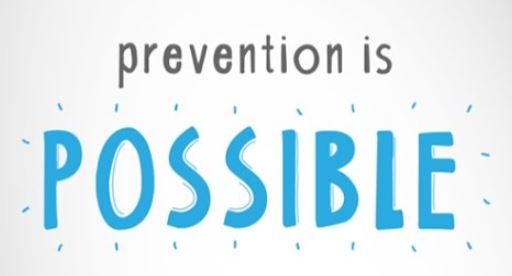
Assault Prevention in Relationships
If you’ve identified that your partner exhibits controlling or aggressive behaviors and you’re afraid to address these issues within your relationship, it’s time to get help.
Victims often don’t realize the dangers of their situation until it’s too late — the dynamic between the abuser and abused is strategically designed to discourage the victims from acknowledging or addressing the problem. Intimate partner abuse and violence are never okay. They’re more common than you might think, and it’s wholly within your power and your rights to get out safely.
Ways of Domestic Violence Prevention
https://www.marriage.com/advice/domestic-violence-and-abuse/ways-of-domestic-violence-prevention/
20 Effective Ways of Domestic Violence Prevention (marriage.com)
Preventing Intimate Partner Violence |Violence Prevention|Injury Center|CDC
Relationships and Violence Prevention – MSU Denver
Preventing Interpersonal Violence in Relationships – PsychAlive
10 Signs of a Healthy Relationship – One Love Foundation (joinonelove.org)
10 Signs of an Unhealthy Relationship – One Love Foundation (joinonelove.org)
ARE YOU A CONCERNED PARENT, TEACHER, EDUCATOR, COUNSELOR, ADMINISTRATOR, ETC.???
We need to teach our children how to prevent violence in relationships!
Peace Over Violence – In Touch with Teens Curriculum
In order to help youth develop and maintain healthy, violence-free relationships, Peace Over Violence has been implementing the In Touch With Teens Violence Prevention curriculum in junior high and high schools and other community based youth organizations. The eleven-unit curriculum empowers youth to have healthy relationships by providing information about power and control, elements of healthy relationships and healthy sexuality, and media literacy as well as education on sexual harassment, sexual assault, and dating violence. The curriculum further addresses the development of pro-social skills such as empathy, impulse control, effective communication, problem solving, and bystander accountability. Continue Reading
SIECUS – Sex Ed for Social Change
“Teen Dating Violence: Sex ed is a prevention strategy”
“…teen dating violence is not being talked about nearly enough. We need to spread awareness to make sure young people are equipped with the information they need to understand and address abusive relationships. And I bet you can guess where this is going…
That’s right: sex ed!
Comprehensive sex education can provide young people with the exact information and skills they need to understand and address TDV before they become teenagers. It includes topics and lessons on healthy relationships, identifying abusive behavior, communication, consent, and boundary setting/respecting. As outlined by the National Sexuality Education Standards, this type of instruction can teach young people to: ” Continue Reading
SIECUS – Teen Dating Violence: Sex ed is a prevention strategy
STALKING
Stalking occurs when someone repeatedly harasses or threatens someone else, causing fear or safety concerns. Most often, stalking occurs by someone the victim knows or with whom they had an intimate relationship.
Help prevent stalking by knowing the warning signs and how to get help.
https://www.cdc.gov/violenceprevention/datasources/nisvs/preventingstalking.html
FAST FACTS
https://www.cdc.gov/violenceprevention/intimatepartnerviolence/stalking/fastfact.html
Facts About Stalking
According to the National Intimate Partner and Sexual Violence Survey (NISVS):
- Stalking is common. About 1 in 6 women and 1 in 17 men have experienced stalking in their lifetimes.
- Stalking starts early. Nearly 54% of female victims and 41% of male victims experienced stalking before the age of 25.
- Stalking impacts the physical and mental health of victims. Research shows stalking can lead to depression and post-traumatic stress disorder. About 68% of female and 70% of male victims experienced threats of physical harm during their lifetime.
Common Stalking tactics can include:
- Unwanted phone calls
- Unwanted emails, instant messages, text messages, voice messages, or social media messages
- Approaching a victim or showing up unwanted, such as at the victim’s home, workplace, or school
- Leaving strange or potentially threatening items for the victim to find
- Watching, following, or tracking a victim
- Sneaking into the victim’s home or car and doing things to scare the victim or let them know the perpetrator had been there
PREVENTION IS POSSIBLE.
Everyone can work together to know, name, and stop stalking by:
- Helping others define and recognize stalking behaviors
- Mobilizing men and boys as allies in prevention efforts
- Creating and supporting safe environments within relationships, schools, and communities through programs and policies that promote healthy relationships
Need help? Know someone who does?
Contact your local service provider or a national hotline:
- Victim Connect: 1-855-4VICTIM (1-855-484-2846)
- National Domestic Violence Hotline: 1−800−799−7233 or TTY 1−800−787−3224 En Español
- The National Sexual Assault Hotline: 1-800-656-HOPE (4673)

Cyber Civil Rights Initiative
HOTLINE: 1-844-878-CCRI (2274)
Posting Nude/Sexual Images Without Consent
(“Revenge Porn”)
is a FEDERAL CRIME.
Cyber Civil Rights Legal Project
“The Cyber Civil Rights Legal Project helps victims of nonconsensual pornography by providing them legal assistance on a pro bono basis. The Cyber Civil Rights Legal Project is founded on the principle that people have a right of privacy in their intimate photographs and videos, and that the public, online dissemination of that media without consent is an invasion of that sexual privacy amounting to a “cyber civil rights” violation.”
US Attorneys who are providing pro bono legal assistance: https://www.cybercivilrights.org/professionals-helping-victims
LEGAL NOTICE:
Revenge porn is becoming (OR has already become) a federal crime as the SHIELD Act has been passed. The SHIELD Act is an amendment to the Violence Against Women Reauthorization Act of 2021.
The Violence Against Women Reauthorization Act of 2021 criminalizes the nonconsensual distribution of nude or sexually explicit images. Offenders could be imprisoned for up to two years.
“For victims of nonconsensual pornography, technology today makes it possible to destroy a person’s life with a single click,” Rep. Jackie Speier, D-Calif., said in a statement. Speier continued, “The damage caused by these attacks can crush careers, tear apart families, and, in the worst cases, has led to suicide.”
Text “NOFILTR” to 741741 for immediate assistance for “Grooming”
If you’re being sextorted, GET HELP NOW – TEXT “THORN” TO 741741
DASH
Domestic Abuse Survivor Help offers peer support to individuals in abusive relationships and in relationship abuse recovery.
OUR MISSION
… to create freedom from domestic abuse for everyone, in whatever form that takes for them, shining a guiding light with the wisdom of our own experience as survivors.
We value:
- Self-direction, understanding that people are the experts in their own lives;
- Support without judgment;
- Empathy and compassion for each person’s struggle;
- Deep understanding of the dynamics of power and control.
WHAT WE DO
- are ready to get out of an abusive relationship.
- need to stay in an emotionally abusive relationship for now.
- feel like they’re stuck in the abusive relationship forever.
- left an abusive relationship and want help healing from relationship abuse.
WHY WE DO THIS
WHO WE ARE
HOW IT WORKS
- Read the details.
- Submit the request form.
- We’ll assign you a mentor.
- You’ll get an email from your peer support mentor.
- If your mentor is a good fit for you, that’s great! If not, we’ll pair you with a different mentor.
Want to be a peer support mentor?
- Read the details.
- Submit the application.
- Go through training and get to know other mentors.
- Receive emails with survivor recommendations.
- You decide when to take on survivors and how many to mentor at a time.
- Reach out to your survivor(s) via email as needed.
WHEN WE’RE AVAILABLE
WHERE WE WORK
HELP TO HEAL FROM RELATIONSHIP ABUSE
HealthyPlace
Mental Health Support, Resources & Information | HealthyPlace
“Healthyplace.com is the largest consumer mental health site on the net. We provide authoritative information and support to people with mental health concerns, along with their family members and other loved ones.
“At HealthyPlace.com, you’ll find comprehensive, authoritative information on psychological disorders, psychiatric medications, and other mental health treatments. We also have online psychological tests, breaking mental health news, and more.
“We believe the most important thing in a person’s life is “peace of mind”.
“And at HealthyPlace.com, we help bring that to you by providing mental health information from experts, as well as everyday people who are dealing with psychological disorders.
Learn More About HealthyPlace.com | HealthyPlace
On About Us, you will see a list of Conditions from “Abuse” to “Schizoaffective Disorder” which link to those Communities where you can find “tons” of valuable information, articles, books, and videos. (Some links are provided below for your convenience.)
They also have many, many Mental Health BLOGS! Including:
Mental Health for the Digital Generation | Trauma/PTSD | Verbal Abuse in Relationships (includes an article How Abuse Can Lead to Suicidal Thoughts | HealthyPlace)
Mental Health Support, Resources & Information | HealthyPlace
Conditions include:
- Abuse Information & Resources (Abuse Information, Emotional & Psychological Abuse, Physical Abuse, Domestic Violence, Teenage Dating Violence, Help)
- Addictions
- Anxiety, Panic, Phobias
- Depression (Types, Treatment, Self-Help)
- Dissociative Disorders (Types, Causes, Symptoms, Treatment)
- LGBT & Mental Health (much more, including links to many Psychological Tests)
- Self-Help
Click Here for Resources – Mental Health & Crisis
Click here for Resources – ONLINE THERAPY (Many are FREEE!!)
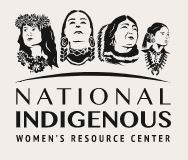
Indigenous/Native American Organizations
What does National Indigenous Women’s Resource Center do?
With a mission to end violence against Native American women and children, Mending the Sacred Hoop and its many programs and services supports victims of abuse and leads efforts to restore the safety of women across the country.
Native Womens Wilderness is an organization whose mission is to inspire and raise the voices of Native Women in the outdoor realm and encourage a healthy lifestyle grounded in the wilderness. Native Womens Wilderness also works on missing and murdered Indigenous women awareness.
Missing and Murdered Indigenous Women USA is a community-led initiative that focuses on the missing and murdered Indigenous women (MMIW) epidemic on both sides of the Canadian-U.S. border. There are systemic causes of the violence that causes the disproportionate rate of missing and murdered Indigenous women and girls, of which a great many cases go unsolved.
Across the United States and Canada Native Women and girls are being taken or murdered at an unrelenting rate. Native Hope exists to address the injustice done to Native Americans. We dismantle barriers through storytelling and impactful programs to bring healing and inspire hope.
Native Hope Resource Guide Addressing Native American Issues as a Non-Native for Allies
StrongHearts Native Helpline (1-844-762-8483, or strongheartshelpline.org) is a 24/7 safe, confidential and anonymous domestic, dating and sexual violence helpline for American Indians and Alaska Natives, offering culturally-appropriate support and advocacy.
The Center provides legal assistance to indigenous peoples of the Americas to combat racism and oppression, to protect their lands and environment, to protect their cultures and ways of life, to achieve sustainable economic development and genuine self-government, and to realize their other human rights. The Center’s Safe Women, Strong Nations project partners with Native women’s organizations and Indian and Alaska Native nations to end violence against Native women and girls. Our project raises awareness to gain strong federal action to end violence against Native women; provides legal advice to national Native women’s organizations and Indian nations on ways to restore tribal criminal authority and to preserve tribal civil authority; and helps Indian nations increase their capacity to prevent violence and punish offenders on their lands.
Alliance of Tribal Coalitions to End Violence
Tribal Coalitions: Increase awareness of domestic violence, sexual assault, and sex trafficking against American Indian and Alaska Native women.
Enhance the response to violence against women at the tribal, federal, and state levels; and identify and provide technical assistance to coalition membership and tribal communities to enhance access to essential services.
VICTIM SERVICES DIRECTORY
Victim Services Directory for Trafficking Victims (tribaltrafficking.org)
Our holistic victim services directory, Sex Trafficking in Indian Country: Victim/Survivor Resource Book, is intended to provide Tribal Coalitions with basic information on sex trafficking as it impacts Native people and to provide access to direct services that may assist victims/survivors of sex trafficking. This resource contains a 900+ page victim/survivor services directory that is organized by state. Only states with a Tribal Coalition are represented in this directory.
This user-friendly directory of relevant free-to-low cost services can be used to aid victims of sex trafficking and sexual assault so they can easily access everything from short-term resources such as emergency shelter, food, and protection order assistance to long-term services like healthcare, education, and employment.
The directory was created with the tribal coalitions in mind, so they can immediately refer their clients to a national network of direct service providers. However, we have also designed this directory to be user friendly, so individuals looking for help can have a one-stop-shop to deal with the effects of sex trafficking, sexual assault, and exiting the sex industry.
(This directory was published in September of 2016 and it reflects information that was current at the time of publication)
Missing and Murdered Indigenous Women USA
MMIW USA’s main focus is the families and women that have been abandoned by law enforcement and other institutions. They fill the gap between the family and law enforcement and demand answers, something these families felt afraid to do. Two years ago MMIW USA started the Staying Sacred Program for young women and girls. At the meeting the girls are taught self-defense and empowerment through native culture. We engage in discussions around trafficking and social media and we also balance that with medicine making and giving them a place to connect with the land and our Earth Mother. Proceeds will help this program expand, buying facial recognition software to look for trafficked women and the capability to run back ground checks as we delve into stopping the violence that leaves some native women 10 times more likely to be raped or murdered. Chukmaskhi’ for your help in this matter. You are appreciated.
(On the website, you can read “More about us” by clicking the button.)
Allow 7-10 business days
Some things can be so easily digitally slapped together these days. We wanted a symbol that was organic and real. Our Artist Tyler Phibbs (Blackfoot) had an idea… an idea to take a human handprint on glass, break it with a hammer and then scanning the pieces. Chris Borges (Manaus – Amazonia) literally lent a hand and we were on a creative frenzy. Why this much effort for a logo?! Why so many pieces involved?! Each missing person is worth all the effort. A human handprint from a Manaus medicine family descendent is a prayer of a return to healing. The handprint shattered in pieces represents the shattered hearts and lives of the victims and families whom are impacted by this tragic epidemic. We hope these items help spread awareness, help in support MMIW USA, bring our family members home and stop this cycle. YAKOKE CHITO.

Lauren’s Kids
Our mission is to prevent child sexual abuse through education and awareness and to help survivors heal with guidance and support. https://laurenskids.org/
Lauren’s Kids is based in South Florida and educates adults and children about sexual abuse prevention through in-school curricula, awareness campaigns, and speaking engagements around the country and the world.
The Issue of Child Sexual Abuse | Includes: Tactics of the perpetrator and Signs a child may be a victim of sexual abuse
Combatting Human Trafficking | Family Safety
SAFER, SMARTER FAMILIES | Digital Health & Safety Resources
During this uncertain time of school closures, childcare pressures, and increased reliance on digital devices, it is important for families to be mindful of safety – the FBI has released guidance for parents to stay alert, especially when 1 in 5 children who touch a digital device will be sexually solicited online.
Parents – fear not! We are here to provide you with the knowledge, language, and activities necessary to teach your elementary school aged child(ren) about personal safety in a way that is comfortable, accessible, and fun. (Have a middle or high schooler in your home? Visit SaferSmarterFamilies.org for lessons designed for older children and teens!)
Lauren’s Kids has posted 6 digital lessons and activities from the Blueprint for Building Safer, Smarter Families resource, designed for use with elementary school students.
For older children in middle school and high school, see SAFER SMARTER FAMILIES
Safer, Smarter Families Family Safety Toolkit
The Safer, Smarter Families Family Safety Toolkit is designed to help your family address personal safety, abuse prevention, and social-emotional learning in a way that is comfortable and accessible for both you and your children.
For Parents, Family Members, Teachers, Educators, Young Adults & Teens
Internet Safety for Kids | How to Keep Your Kids Safe Online
(Source: Consumernotice.org | Written By : Terry Turner | Edited By : Kim Borwick | Last Modified: August 18, 2021)
Threats to children’s internet safety include invasions of privacy, cyberbullying, sexting and harassment. Options to protect your children include parental controls, apps and tracking software. But the most effective way to keep your kids safe is to talk with them about online risks, how to avoid them and how they can come to you when something goes wrong.
Internet safety for kids depends on parents being aware of online risks and understanding how to help their children and teens avoid them.
Almost every American child and teen has access to the internet. They socialize in online games or on smartphones just as they would on a playground. They live largely in a digital community. But like any community, there are risks and dangers.
Parents are the best suited to monitor kids’ online activity. They are also the most trusted adults most kids will turn to if they experience online dangers. Understanding what your children or teens do online is vital to protecting them from digital threats. . .
What Are Kids Doing Online?
~ 30 percent have used the internet in ways their parents wouldn’t approve
~ 21 percent have visited sites where they can chat with strangers
~ 17 percent have visited porn sites
~ 11 percent have visited sites that offer ways to cheat on homework
~ 4 percent have visited online gambling sites
Source: Children’s Internet Usage Study, Center for Cyber Safety and Education (Grades 4-8)
TOPICS in article:
♦ How Children and Teens Get Online
♦ Online Dangers to Discuss with Your Kids
♦ How to Set Rules
♦ Steps You Can Take to Protect Your Children Online
♦ Using Tech and Apps to Protect Your Kids Online
♦ Monitoring, Tracking and Limiting Your Child’s Online Activity
♦ Filtering Out Inappropriate Content
♦ How to Teach Your Kids to Use Their Smartphones Responsibly
♦ Your Child’s First Smartphone | 5 Things to Think About
♦ Make Sure Your Teen Understands the Dangers of Texting and Driving
♦ Teaching Your Teens How to Use Social Media Safely
♦ Tips for Teen Safety on Social Media
♦ Cyberbullying Prevention
♦ Signs Your Child Is Being Cyberbullied
♦ What Parents Can Do to Deal With Cyberbullies
♦ Teach Your Child How to Stand Up for Cyberbully Victims
♦ How to Talk to Your Teens About Sexting | 5 Things to Tell Your Teens About Sexting
♦ What You Should Know About Your Kids and Online Gaming
♦ How to Keep Your Child Safe in Online Gaming
♦ What to Do If Your Child’s Safety Is Threatened Online
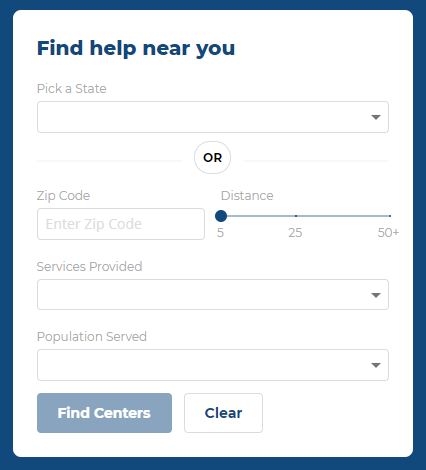
( centers.rainn.org )
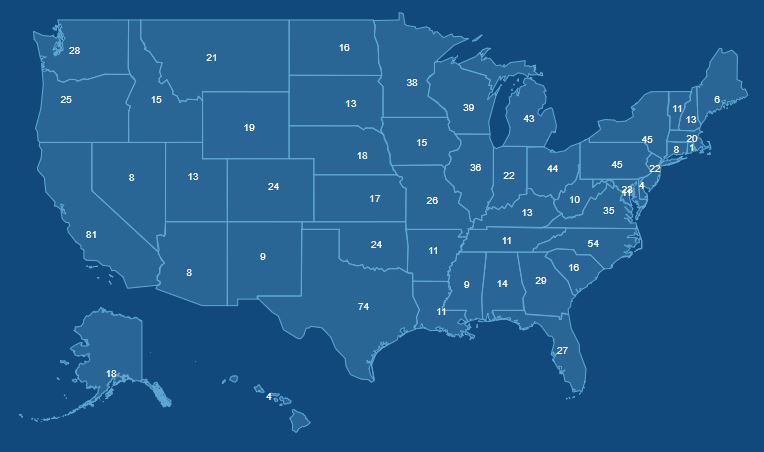
It’s helpful to have support in your own community after a sexual assault. Local service providers make it easy for you to access care, and they are knowledgeable about the laws in your area and local resources that can assist you.
RAPE, ABUSE AND INCEST NATIONAL NETWORK
HOTLINE: 1-800-656-HOPE (4673)
Available en Español
ADVOCATES AND SHELTERS (Local Programs) listed by State, organized by County:
https://www.womenslaw.org/find-help/advocates-and-shelters
For a list and description of organizations that provide assistance for survivors and their families, visit: https://www.rainn.org/national-resources-sexual-assault-survivors-and-their-loved-ones
- Asian, Native Hawaiian and Pacific Islander Survivors
- Black Survivors
- Child Abuse/Sexual Abuse
- College Students
- Domestic, Dating and Intimate Partner Violence
- Human Trafficking
- Immigrant Survivors
- Incest
- Indigenous Survivors
- Latinx Survivors
- Legal Resources
LGBTQ Survivors
LGBTQ Survivors of Color
Male Survivors
Medical/Physical Health
Mental Health
Military Resources
Stalking
Sexual Assault Prevention
Suicide & Self-Harm
Survivors with Disabilities
“The RAINN app gives survivors of sexual violence and their loved ones access to support, self-care tools, and information to help manage the short- and long-term effects of sexual violence.
Find Support
“The app’s “Hotline” feature can connect you directly with one-on-one support from a trained support specialist on RAINN’s National Sexual Assault Hotline via phone or online chat. It’s free, confidential and available 24/7.
“You can also chat with other survivors in our peer-to-peer HelpRoom.”
Practice Self-Care
“The app’s “Self-Care” section contains exercises to help you take a moment for yourself as you heal. They include a Mood Tracker to help you reflect on how you’re feeling and figure out the best ways to care for yourself; relaxing visuals from The Monday Campaign to help you destress; and audio exercises from Headspace for calming meditation.”
Learn More
“The app’s “Learn” section includes helpful information on sexual violence topics, finding and giving support, and healing.
“You can also hear from survivors offering their own real-life stories of hope and healing.”
The RAINN app is available in the App Store and on Google Play. Download it today.
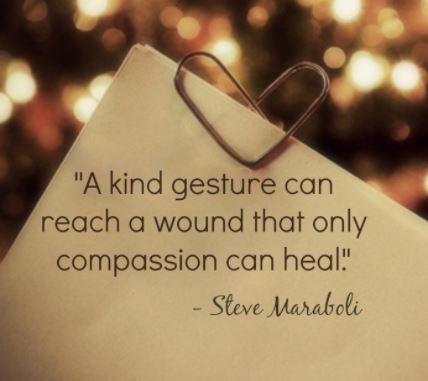
Domestic Violence and Abuse – HelpGuide.org
Are you or someone you care about in an abusive relationship?
Here’s how to recognize the signs of domestic abuse—physical, emotional, sexual, verbal, or financial—and get help.
HelpGuide.org
About Us
HelpGuide is an independent nonprofit that provides free, evidence-based mental health education and support. Our mission is to empower people with information they can use to help themselves and their loved ones.
HelpGuide is proud to be recognized as a transparent and trustworthy nonprofit provider of quality health information.
HelpGuide is dedicated to Morgan Leslie Segal, whose tragic suicide might have been prevented if she had access to better information.
Domestic Abuse Home Page – HelpGuide.org
(PTSD & TRAUMA)
Recovering from Rape and Sexual Trauma
Recovering from sexual assault takes time, and the healing process can be painful. But you can regain your sense of control, rebuild your self-worth, and learn to heal.
Helping Someone with PTSD
When someone you care about suffers from post-traumatic stress disorder, it can be overwhelming. But with these steps, you can help your loved one move on with their life.
Emotional and Psychological Trauma
When bad things happen, it can take a while to get over the pain and feel safe again. But with these self-help strategies and support, you can speed up your recovery.
Emotional and Psychological Trauma – HelpGuide.org
Suicide Prevention
Suicide prevention starts with recognizing the warning signs and taking them seriously. If you think a friend or family member is suicidal, there’s plenty you can do to help save a life.
Suicide is a desperate attempt to escape suffering that has become unbearable. Blinded by feelings of self-loathing, hopelessness, and isolation, a suicidal person can’t see any way of finding relief except through death. But despite their desire for the pain to stop, most suicidal people are deeply conflicted about ending their own lives. They wish there was an alternative to suicide, but they just can’t see one.
Myth: People who talk about suicide won’t really do it.
Fact: Almost everyone who attempts suicide has given some clue or warning. Don’t ignore even indirect references to death or suicide. Statements like “You’ll be sorry when I’m gone,” “I can’t see any way out,”—no matter how casually or jokingly said—may indicate serious suicidal feelings.
Most suicidal individuals give warning signs or signals of their intentions. The best way to prevent suicide is to recognize these warning signs and know how to respond if you spot them. If you believe that a friend or family member is suicidal, you can play a role in suicide prevention by pointing out the alternatives, showing that you care, and getting a doctor or psychologist involved.
See Additional HelpGuide Topics below.
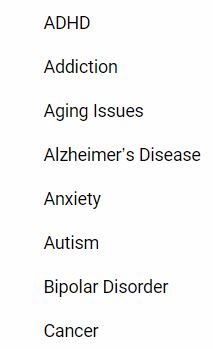
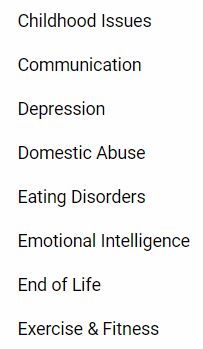
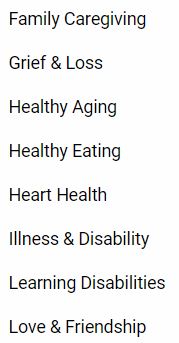
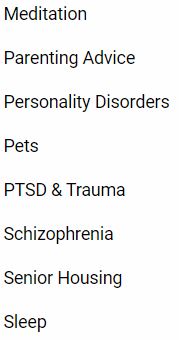
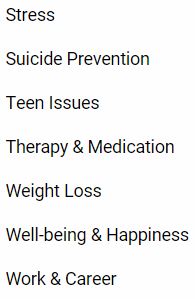
Click Here for Resources – Mental Health & Crisis
Click here for Resources – ONLINE THERAPY (Many are FREEE!!)
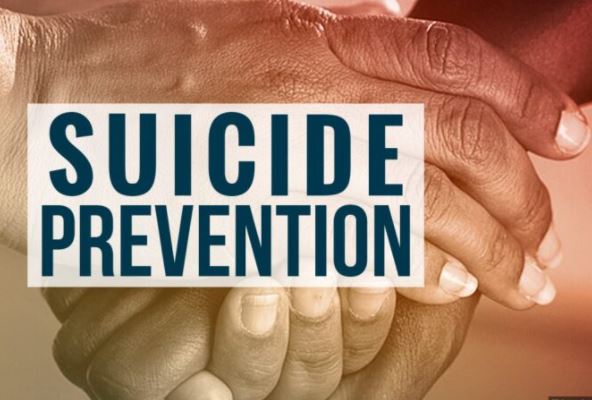
Signs and Symptoms
The behaviors listed below may be signs that someone is thinking about suicide.
- Talking about wanting to die or wanting to kill themselves
- Talking about feeling empty, hopeless, or having no reason to live
- Making a plan or looking for a way to kill themselves, such as searching for lethal methods online, stockpiling pills, or buying a gun
- Talking about great guilt or shame
- Talking about feeling trapped or feeling that there are no solutions
- Feeling unbearable pain (emotional pain or physical pain)
- Talking about being a burden to others
- Using alcohol or drugs more often
- Acting anxious or agitated
- Withdrawing from family and friends
- Changing eating and/or sleeping habits
- Showing rage or talking about seeking revenge
- Taking great risks that could lead to death, such as driving extremely fast
- Talking or thinking about death often
- Displaying extreme mood swings, suddenly changing from very sad to very calm or happy
- Giving away important possessions
- Saying goodbye to friends and family
- Putting affairs in order, making a will
If these warning signs apply to you or someone you know, get help as soon as possible,
particularly if the behavior is new or has increased recently.
Risk Factors
Suicide does not discriminate. People of all genders, ages, and ethnicities can be at risk. Suicidal behavior is complex, and there is no single cause. Many different factors contribute to someone making a suicide attempt. But people most at risk tend to share specific characteristics.
The main risk factors for suicide are:
- Depression, other mental disorders, or substance abuse disorder
- Certain medical conditions
- Chronic pain
- A prior suicide attempt
- Family history of a mental disorder or substance abuse
- Family history of suicide
- Family violence, including physical or sexual abuse
- Having guns or other firearms in the home
- Having recently been released from prison or jail
- Being exposed to others’ suicidal behavior, such as that of family members, peers, or celebrities
Many people have some of these risk factors but do not attempt suicide. It is important to note that suicide is not a normal response to stress. Suicidal thoughts or actions are a sign of extreme distress, not a harmless bid for attention, and should not be ignored.
Often, family and friends are the first to recognize the warning signs of suicide and can be the first step toward helping an at-risk individual find treatment with someone who specializes in diagnosing and treating mental health conditions. See the resources on NIMH’s Find Help for Mental Illnesses page if you’re not sure where to start.
Suicide is complex. Treatments and therapies for people with suicidal thoughts or actions will vary with age, gender, physical and mental well-being, and with individual experiences. NIMH has focused research on identifying people at risk for suicide and identifying effective interventions.
Please visit NIMH » Suicide Prevention (nih.gov) for additional information.
National Center on Sexual Exploitation
1201 F St NW, Suite 200 | Washington, DC 20004
202.393.7245 | PUBLIC@NCOSE.COM
Home – NCOSE (endsexualexploitation.org) | Blog Articles
Resources | Survivor Resources, Prevention and Recovery, Ally Resources, Press Resources
The National Center on Sexual Exploitation (NCOSE) is the leading organization exposing the links between all forms of sexual abuse and exploitation. We are a nonprofit organization with a focus on a wide-ranging and interrelated array of topics including, but not limited to, child sexual abuse, child-on-child harmful sexual behavior, compulsive sexual behaviors, demand for sexual exploitation, illicit massage businesses, image-based sexual abuse, institutional sexual abuse, men’s violence against women, the neurological impacts of sexual trauma, the public health harms of pornography, prostitution, sex trafficking, sexual harassment and assault, sexual objectification, stripping, as well as the intersection of these issues with technology.
We are nonpartisan and nonsectarian because the fight to end sexual exploitation knows no political or religious boundaries. The inherent harms and oppression of sexual abuse and exploitation impact people regardless of their age, nationality, race, sex, sexual orientation, or creed.
We love people and partnerships. This is why we work relentlessly to build a diverse movement that welcomes all people committed to defending human dignity.
Our Vision
The National Center on Sexual Exploitation believes in a world free from sexual abuse and exploitation.
We believe every human being deserves the opportunity to live life to its fullest potential: to pursue dreams and ambitions; express creativity and hone talents; seek beauty, truth, and faith; experience hope, joy, and love with family and friends—to thrive. Such a vision requires not only individuals and institutions that work towards its realization but also a culture that embraces its responsibility to preserve and protect human flourishing. We aspire to create that culture.
Our Mission
Defending Human Dignity. Opposing Sexual Exploitation.
One of the Dirty Dozen 2021
Discord – NCOSE (endsexualexploitation.org)
Discord, a popular communication service used by over 100 million active monthly users, has exploded in popularity since the onset of COVID-19 sent most of the world into the digital space. But what started in 2015 as a haven for gamers has quickly morphed into a virtual meeting spot where sexual exploitation and abuse thrive. Now, exploiters go to Discord to groom children for sexual abuse or sex trafficking, and to trade pornography—including child sexual abuse materials, non-consensually recorded and/or shared pornography, and more.
Office on Trafficking in Persons
- Blog posts
- Featured Resource
- The opportunity to report a tip or request services
- Visitors can subscribe to Human Trafficking’s Email and News Alerts.
Training Specific:
- A Resources section offers a list of organizations that provide training and technical assistance to build the capacity of service providers and communities to respond to human trafficking as it intersects with multiple systems.
- A short synopsis and contact information on each is provided. Training audiences include youth-serving organizations, government agency service providers, and communities who respond to human trafficking.
10 Ways You Can Help End Trafficking | The Administration for Children and Families (hhs.gov)
- Know the Signs: https://humantraffickinghotline.org/human-trafficking/recognizing-signs
- Report a Tip: National Human Trafficking Hotline
- Spread the Word: Share and display HHS Look Beneath the Surface and DHS Blue Campaign Visit disclaimer page awareness resources in your community. Let everyone know that the National Human Trafficking Hotline Visit disclaimer page is here to help.
- Think Before You Shop: Consider how you shop Visit disclaimer page and eat Visit disclaimer page . Who made your clothes? Who prepared your food? Calculate your Slavery Footprint Visit disclaimer page , and know which goods may be produced by child or forced labor Visit disclaimer page .
- Tell Your Friends: The U.S. Government has zero tolerance policies for employees, uniformed service members, and contractors paying for sex. Learn more about the Federal Acquisition Regulations and human trafficking Visit disclaimer page .
- Volunteer Locally: Ask anti-trafficking organizations in your community Visit disclaimer page how you can support them. Perhaps they need volunteers or you could help with an awareness event.
- Stay Informed: Sign up for DOJ human trafficking news alerts Visit disclaimer page , follow relevant organizations on social media, read reports as they are released, or check out OTIP’s newsfeed.
- Register for Training: OTIP’s National Human Trafficking Training and Technical Assistance Center trains public health professionals and the Office for Victims of Crime Training and Technical Assistance Center Visit disclaimer page supports the criminal justice system.
- Use Your Skills: Can you train or hire survivors? Reach out to potential local partners Visit disclaimer page . Do you work in a school? Propose anti-trafficking protocols Visit disclaimer page . Are you an attorney? Offer pro-bono services Visit disclaimer page . Writing a story? Use media best practices Visit disclaimer page . Work in hospitals or clinics? Encourage your colleagues to register for the SOAR to Health and Wellness training.
- Raise Your Voice: Ask representatives Visit disclaimer page how they are addressing human trafficking. Let them know what your community needs.
SAMHSA’s NATIONAL HELPLINE
1-800-662-HELP (4357)
Substance Abuse. Mental Health.
Find Help. Find Treatment.
SAMHSA – Substance Abuse and Mental Health Services Administration
DISASTER DISTRESS HELPLINE
1-800-985-5990 24/7
The Disaster Distress Helpline, 1-800-985-5990, is a 24/7, 365-day-a-year, national hotline dedicated to providing immediate crisis counseling for people who are experiencing emotional distress related to any natural or human-caused disaster. This toll-free, multilingual, and confidential crisis support service is available to all residents in the United States and its territories.
Stress, anxiety, and other depression-like symptoms are common reactions after a disaster.
Call or text 1-800-985-5990 to connect with a trained crisis counselor.
Alcohol, Tobacco & Other Drugs https://www.samhsa.gov/find-help/atod
Misusing alcohol, tobacco, and other drugs can have both immediate and long-term health effects.
Behavioral Health Treatment and Services https://www.samhsa.gov/find-help/treatment
Behavioral health treatments are ways of helping people with mental illnesses or substance use disorders. For example, counseling and more specialized psychotherapies seek to change behaviors, thoughts, emotions, and how people see and understand situations. Medications for mental and substance use disorders provide significant relief for many people and help manage symptoms to the point where people can use other strategies to pursue recovery. For many people, the most effective behavioral health approach involves a combination of counseling and medication. Early treatment is best. A trained professional should do a full evaluation to make the diagnosis. No single treatment works best. Treatments must address each person’s needs and symptoms.
Behavioral Health Treatment Locator https://findtreatment.samhsa.gov/
“Welcome to the Behavioral Health Treatment Services Locator, a confidential and anonymous source of information for persons seeking treatment facilities in the United States or U.S. Territories for substance use/addiction and/or mental health problems.
Disaster Distress Helpline https://www.samhsa.gov/find-help/disaster-distress-helpline
SAMHSA’s Disaster Distress Helpline provides 24/7, 365-day-a-year crisis counseling and support to people experiencing emotional distress related to natural or human-caused disasters.
The Disaster Distress Helpline, 1-800-985-5990, is a 24/7, 365-day-a-year, national hotline dedicated to providing immediate crisis counseling for people who are experiencing emotional distress related to any natural or human-caused disaster. This toll-free, multilingual, and confidential crisis support service is available to all residents in the United States and its territories. Stress, anxiety, and other depression-like symptoms are common reactions after a disaster. Call or text 1-800-985-5990 to connect with a trained crisis counselor.
Early Serious Mental Illness Treatment Locator https://www.samhsa.gov/esmi-treatment-locator Locator
What is SAMHSA’s National Helpline?
SAMHSA’s National Helpline, 1-800-662-HELP (4357), (also known as the Treatment Referral Routing Service) or TTY: 1-800-487-4889 is a confidential, free, 24-hour-a-day, 365-day-a-year, information service, in English and Spanish, for individuals and family members facing mental and/or substance use disorders. This service provides referrals to local treatment facilities, support groups, and community-based organizations. Callers can also order free publications and other information.
Also visit the online treatment locators.
What are the hours of operation?
The service is open 24/7, 365 days a year.
What languages are available?
English and Spanish are available if you select the option to speak with a national representative.

THORN Digital Defenders
(Ashton Kutcher and Demi Moore, Co-Founders) THORN
Text “NOFILTR” to 741741 for immediate assistance for “Grooming”
If you’re being sextorted, GET HELP NOW – TEXT “THORN” TO 741741
Thorn, aka Digital Defenders of Children; Ashton Kutcher’s organization driving tech innovation to fight child trafficking and the sexual exploitation of children.
About Our Fight Against Sexual Exploitation of Children
Our Work to Stop Child Sexual Exploitation
We build technology to defend children from sexual abuse.
We refuse to live in a world where the technology exists to help kids but simply isn’t being used. We build powerful products, lead new programs, maintain essential resources, and develop awareness campaigns to attack the issue from all sides. Technology must be part of the solution.
ACCELERATE victim identification. We identify critical technical needs and produce tools that allow law enforcement to stay ahead of perpetrators and identify more children.
Since 2016, Spotlight has helped law enforcement find kids faster. Our flagship product was developed based on the insights gained from our first survivor survey.
Spotlight accelerates victim identification and helps law enforcement make the best use of the critical time they have to focus on finding more child sex trafficking victims.
EQUIP platforms. Many small and mid-size companies do not have the resources or knowledge to implement child safety procedures and tools, making their platforms vulnerable to abusive content and behavior. We offer resources and tools for companies to help protect kids on their platforms.
Our first step in equipping platforms is the Sound Practices Guide, offering best practices and concrete steps to for companies of all sizes to help protect kids on their platforms, including the Industry Hash Sharing program and PhotoDNA.
Thorn’s commercial product, Safer, is the first comprehensive solution for platforms to identify, remove and report child sexual abuse material.
EMPOWER the public. Here’s where we share what we’ve learned. It’s all about preventing further abuse. We’re getting the word out – increasing awareness and starting conversations.
THORN’s Vision
Eliminate child sexual abuse material from the internet.
Working to deter the problem ~ Child Sexual Abuse Material
The internet has made it too easy for abusers to share child sexual abuse material (legally known as child pornography). They create images and videos with an audience in mind. That content gets shared widely beyond the initial targets – recirculating the image, perpetuating the abuse and retraumatizing the child.
Help prevent child sexual abuse.
BE AWARE.
Educate yourself on child abuse and the intersection with technology.
TALK.
Stay active and engaged with your community to keep an eye out for signs of child abuse. Talk to your children about abuse and the unique risks on the internet.
GET TO KNOW THE CHILDREN IN YOUR COMMUNITY.
They won’t be able to ask for help once something goes wrong and will need you to have your eyes open.
SUPPORT ORGANIZATIONS
… working to prevent abuse and provide survivors with resources. Get to know those in your community as well.
Do you know what GROOMING is?
Do you know what SEXTORTION is?
What is grooming?
Text NOFILTR to 741741 for immediate assistance.
A term used broadly to describe the tactics abusers deploy through the internet to sexually exploit kids and teens.
See also: online safety, grooming, groomer
https://nofiltr.org/
https://nofiltr.org/grooming/#talks
https://nofiltr.org/resources/
We’ve all heard about it or seen it (maybe on snap, in school, or even with friends) someone’s nudes are getting passed around. But who is to blame?
What about the rando that thought it’d be cool to pass it on to 10 friends in a group chat?
Nah, sharing someone else’s nudes is never okay.
STOP SEXTORTION
SEXTORTION
YUP. IT’S A THING.
It’s the threat to reveal intimate images to get you to do something you don’t want to do
If you’re being sextorted, GET HELP NOW – TEXT “THORN” TO 741741
Get Help
From: Stop Sextortion
SEXTORTION
YUP. IT’S A THING.
It’s the threat to reveal intimate images to get you to do something you don’t want to do
TIPS FOR ADULTS
Talk to your kids about sextortion.
THIS IS HARD, BUT YOU’RE ALREADY DOING GREAT BY BEING HERE.
Your children are safer because of your support and guidance through all of life’s challenges. Safety in the digital age is new, and chances are your children feel more comfortable navigating digital communities than you do, while knowing less than they need to stay safe. There are a few things you can do to help your child avoid getting into tricky, and sometimes dangerous, situations like sextortion.
You play an important role in students’ lives and as new threats emerge, it is important to stay ahead of the trends. Teens clearly told us that you are often the first line of defense.
When an individual experiences sextortion, they’re often experiencing it simultaneously on multiple platforms. We know technology can be misused, so it is important to adopt industry standard best practices so that bad actors have fewer places to hide and victims can be adequately protected. Be sure to invest in your safety policies early to keep sextortion off your platform.
Our kids are trying to navigate community and connection in the digital age, while we’re trying to keep up with keeping them safe. Unfortunately, technology moves faster than our laws are able to respond to new abuse trends. By learning about these trends – like sextortion – and including them in your policy agenda, you can help kids feel safe and supported.
From: Stop Sextortion
THORN FOR PARENTS
Announced on September 9, 2021. . .
For parents concerned about their child’s digital safety as they grow up online, we’ve compiled resources, developed conversation guides, and much more to help parents navigate even the most awkward conversations with care and confidence. Here for your talks, awkward pauses and all.
BE YOUR KID’S SAFETY NET
Kids today face a very different set of challenges. There’s a whole new landscape where a child’s relationship with technology and normal sexual development overlap, with a whole new set of experiences online. And they need your help to navigate it safely.
TOPICS: Sexting & Nudes | Device Access & Monitoring | A Balanced Approach |
For Parents, Family Members, Teachers, Educators, Young Adults & Teens
Internet Safety for Kids | How to Keep Your Kids Safe Online
(Source: Consumernotice.org | Written By : Terry Turner | Edited By : Kim Borwick | Last Modified: August 18, 2021)
Threats to children’s internet safety include invasions of privacy, cyberbullying, sexting and harassment. Options to protect your children include parental controls, apps and tracking software. But the most effective way to keep your kids safe is to talk with them about online risks, how to avoid them and how they can come to you when something goes wrong.
Internet safety for kids depends on parents being aware of online risks and understanding how to help their children and teens avoid them.
Almost every American child and teen has access to the internet. They socialize in online games or on smartphones just as they would on a playground. They live largely in a digital community. But like any community, there are risks and dangers.
Parents are the best suited to monitor kids’ online activity. They are also the most trusted adults most kids will turn to if they experience online dangers. Understanding what your children or teens do online is vital to protecting them from digital threats. . .
What Are Kids Doing Online?
~ 30 percent have used the internet in ways their parents wouldn’t approve
~ 21 percent have visited sites where they can chat with strangers
~ 17 percent have visited porn sites
~ 11 percent have visited sites that offer ways to cheat on homework
~ 4 percent have visited online gambling sites
Source: Children’s Internet Usage Study, Center for Cyber Safety and Education (Grades 4-8)
TOPICS in article:
♦ How Children and Teens Get Online
♦ Online Dangers to Discuss with Your Kids
♦ How to Set Rules
♦ Steps You Can Take to Protect Your Children Online
♦ Using Tech and Apps to Protect Your Kids Online
♦ Monitoring, Tracking and Limiting Your Child’s Online Activity
♦ Filtering Out Inappropriate Content
♦ How to Teach Your Kids to Use Their Smartphones Responsibly
♦ Your Child’s First Smartphone | 5 Things to Think About
♦ Make Sure Your Teen Understands the Dangers of Texting and Driving
♦ Teaching Your Teens How to Use Social Media Safely
♦ Tips for Teen Safety on Social Media
♦ Cyberbullying Prevention
♦ Signs Your Child Is Being Cyberbullied
♦ What Parents Can Do to Deal With Cyberbullies
♦ Teach Your Child How to Stand Up for Cyberbully Victims
♦ How to Talk to Your Teens About Sexting | 5 Things to Tell Your Teens About Sexting
♦ What You Should Know About Your Kids and Online Gaming
♦ How to Keep Your Child Safe in Online Gaming
♦ What to Do If Your Child’s Safety Is Threatened Online
About WomensLaw.org
(En Español)
Despite its name, WomensLaw.org provides information that is relevant to people of all genders, not just women. Our Email Hotline will provide legal information to anyone who reaches out with legal questions or concerns regarding domestic violence, sexual violence, or any other topic covered on WomensLaw.org.
About Abuse
These pages provide an overview of domestic violence and sexual assault as well as more detailed information about specific forms of abuse.
- Am I Being Abused? (Danger Assessment; Signs of Abuse)
- Forms of Abuse (Abuse Using Technology; Domestic Violence/Teen Violence; Emotional Abuse; Financial Abuse; Reproductive Abuse & Coercion; Sexual Abuse & Exploitation; Stalking & Cyberstalking; Litigation Abuse)
- Abuse in Specific Communities (Abuse Among People Living with AIDS/HIV; Abuse in Immigrant Communities; Abuse in Tribal Communities; Information for Teens & Young Adults; LBGTQIA Victims; Male Victims; Abuse in Jewish Community; Elder Abuse
- Safety Tips (Domestic Violence Victims; Stalking Victims; Safety Planning with Children; Safety in a Confidential Address; Safety in Court; Safety in Rural Areas; Safety While Using the Internet; Safety While Using Social Media
- In the Workplace (Sexual Harassment by a Co-Worker or Boss; Workplace Restraining Orders (filed by Employer)
Find Help (US Map)
Find Help for Yourself and for Others | WomensLaw.org
Click on your state (in the map or in the drop-down menu) to find contact information for:
- advocates in local domestic violence programs and shelters;
- legal assistance organizations;
- courthouse locations where you can file for a protection order; and
- sheriff departments. If you need to talk to someone about an abusive relationship, you can call the National Domestic Violence Hotline at 1-800-799-7233.
Legal Information (US Map)
Legal Information | WomensLaw.org
- Know the laws – By State
- Preparing for Court – By Yourself
- Immigration
- Federal Gun Laws
- Domestic Violence in the Military
- Videos
Helping Others
Helping Others | WomensLaw.org
- Family, Friends, Co-Workers
- Advocates
- Lawyers
- Doctors, Healthcare Professionals
- Salon Professionals
Womens Law Email Hotline: WomensLaw.org Email Hotline
Other Helpful Information:
Advocates and Shelters | WomensLaw.org (drop-down menu for your State)
National Organizations | WomensLaw.org (listed by subject matter)
Chat Rooms and Message Boards | WomensLaw.org
There are a variety of support services available to victims of domestic violence and sexual assault on the Internet. We have listed some of these resources.
Additional Resources
- Advocates and Shelters | WomensLaw.org (drop-down menu for your State)
- Click here to enter your zip code: Find Domestic Violence and Abuse Help, Information and Stats (domesticshelters.org)
Domestic Violence Support | The National Domestic Violence Hotline (thehotline.org)
- National Organizations | WomensLaw.org (listed by subject matter)
- Chat Rooms and Message Boards | WomensLaw.org
- VictimConnect (serves victims of crime in US (including assault, abuse, domestic violence, teen dating violence, trafficking, stalking, etc.), and make local referrals.
Mental Health Resources
